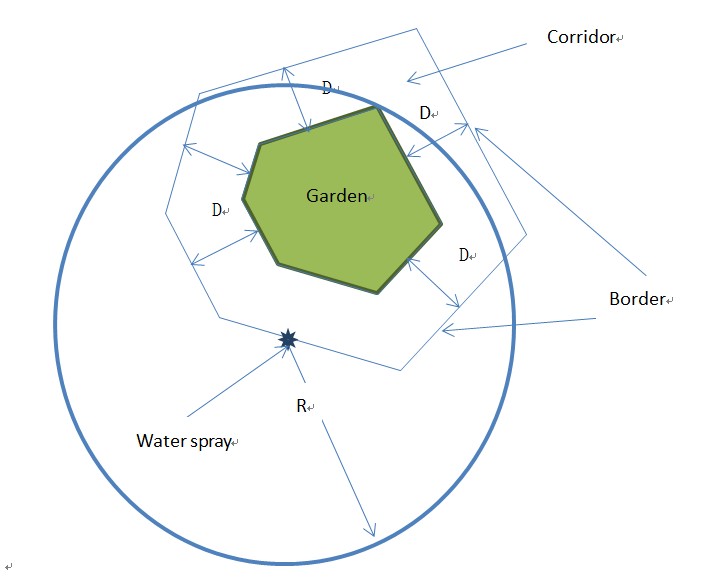
| Online Judge | Online Exercise | Online Teaching | Online Contests | Exercise Author |
|
F.A.Q Hand In Hand Online Acmers |
Best Coder beta VIP | STD Contests DIY | Web-DIY beta |
Design a Garden Border
Time Limit: 4000/2000 MS (Java/Others) Memory Limit: 65535/32768 K (Java/Others)Total Submission(s): 278 Accepted Submission(s): 0
Special Judge
Problem Description
One day you realize your dream and become a fabulous designer. A project manager comes to find you to do some businesses. Due to your wonderful experiences and designing skills, he decides to make a gigantic investment to design a garden border. Now it is your turn to make that happen. For the sake of his contentment, you must follow all his requirements that he mentions:
1. The garden is a convexpolygon. The garden is inside the border and is line-parallel to the border. Between the border and the garden stands the corridor around. The width of the corridor is D (D>=0).
2. The area of the convexpolygon consisting of all the borders must be at least S. (remember the convexpolygon’s area contains the garden’s area inside)
3. On the borders, the manager wants to place a water spray, which has an R spray range. He announces that in your design you must make sure that every point on the borders where the water spray sets can cover all the garden area to make the garden watered.
4. He will give you the garden point by point in random order, totally N points.
(we assure that no three points in one line and these points are all vertexes) He will also show you the base requirement: S, R. And you must give the range of D.
This is a picture to help you to better understand the design. If legal D does not exist, puts a single line: no appropriate design

1. The garden is a convexpolygon. The garden is inside the border and is line-parallel to the border. Between the border and the garden stands the corridor around. The width of the corridor is D (D>=0).
2. The area of the convexpolygon consisting of all the borders must be at least S. (remember the convexpolygon’s area contains the garden’s area inside)
3. On the borders, the manager wants to place a water spray, which has an R spray range. He announces that in your design you must make sure that every point on the borders where the water spray sets can cover all the garden area to make the garden watered.
4. He will give you the garden point by point in random order, totally N points.
(we assure that no three points in one line and these points are all vertexes) He will also show you the base requirement: S, R. And you must give the range of D.
This is a picture to help you to better understand the design. If legal D does not exist, puts a single line: no appropriate design

Input
Multiple cases, end with EOF;
In each case, an integer N, 3<=N<=10000;
Following N lines: (Xi, Yi) |Xi|<109 |Yi|<109
Two floating-point numbers: S(109 >S>=0),R(109 >R>=0);
In each case, an integer N, 3<=N<=10000;
Following N lines: (Xi, Yi) |Xi|<109 |Yi|<109
Two floating-point numbers: S(109 >S>=0),R(109 >R>=0);
Output
D’s range:
Two floating-point numbers, split by blank, just rounded the answers to three digits(the error of answers in range of 0.001 will be accepted), smaller one comes first.
Two floating-point numbers, split by blank, just rounded the answers to three digits(the error of answers in range of 0.001 will be accepted), smaller one comes first.
Sample Input
4 (0,0) (1,1) (1,0) (0,1) 1.000 2.829 4 (1,0) (1,1) (0,1) (0,0) 1 1
Sample Output
0.000 1.000 no appropriate design
Source
| Home | Top |
Hangzhou Dianzi University Online Judge 3.0 Copyright © 2005-2024 HDU ACM Team. All Rights Reserved. Designer & Developer : Wang Rongtao LinLe GaoJie GanLu Total 0.000000(s) query 1, Server time : 2024-11-22 13:04:50, Gzip enabled |
Administration |